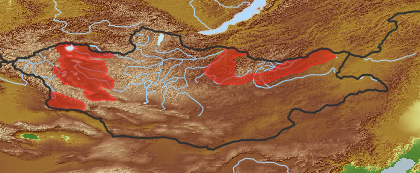| Class: | angiosperms |
| Order: | Ceratophyllales |
| Family: | Ceratophyllaceae |
| Genus: | Ceratophyllum |
| Herbar: | list records  |
| open map in a new window |  |
| species: 1 |
| Habit (i)general appearance of a plant | |
| Parasite status: (i)Is the plant a half- or full parasite? | no parasite/saprophyte (i)Plant fully autonomous, leaves with chlorophyll
example: Most plants, Ranunculus  inherited by family Ceratophyllaceae: no parasite/saprophyte inherited by family Ceratophyllaceae: no parasite/saprophyte
|
| Water or terrestrial plant: (i)Where do the plants grow? | aquatic, submerged (i)Completely submerged water plant, onlys flowers may appear at the surface
example: Zannichellia  inherited by order Ceratophyllales: aquatic, submerged inherited by order Ceratophyllales: aquatic, submerged
|
| Leaf (i)expanded, usually photosynthetic organ of a plant (including phylloclades) | |
| Leaf veination: (i)Arrangement of the main veins of a leaf. | pinnate (i)One main vein, several side veins, sometimes inconspicuous
example: Cicerbita     inherited by family Ceratophyllaceae: pinnate inherited by family Ceratophyllaceae: pinnate
|
| Flower (i)reproductive portion of the plant, consisting of sepals, petals, stamens, and pistils | |
| Flower appearance and pollination: (i)General appearance of the flower. | not attractive, wind-pollinated or some water plants (i)Small, colourless or green flowers
example: Betula, grasslike plants: Carex, Setaria, Juncus  inherited by family Ceratophyllaceae: not attractive, wind-pollinated or some water plants inherited by family Ceratophyllaceae: not attractive, wind-pollinated or some water plants
|
| Spur: (i)A hollow, slender, sac-like appendage of the perianth leaves, storing nectar. | no spur (i)Flower without appendage
example: Peganum  inherited by family Ceratophyllaceae: no spur inherited by family Ceratophyllaceae: no spur
|
| Root / shoot below ground (i)plant part below ground (in most cases), including below ground shoots, without leaves | |
| Root type: (i)Organisation of the roots. | allorhizous (i)Plant with a conspicuous tap root, one larger tap root with side roots
example: Dicotyledonae  inherited by order Ceratophyllales: allorhizous inherited by order Ceratophyllales: allorhizous
|